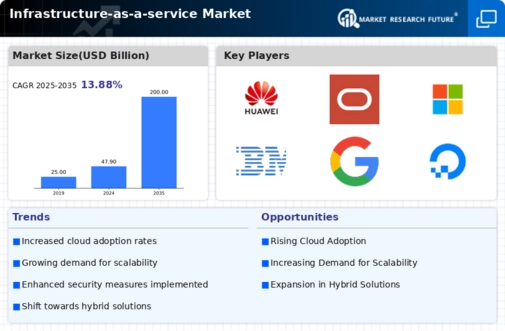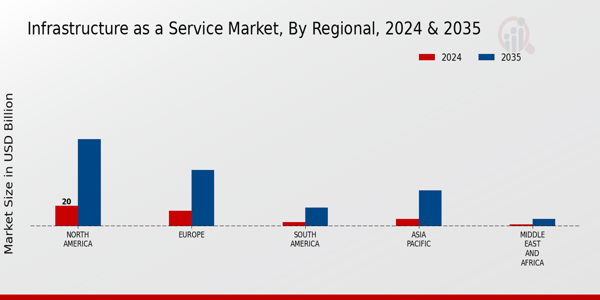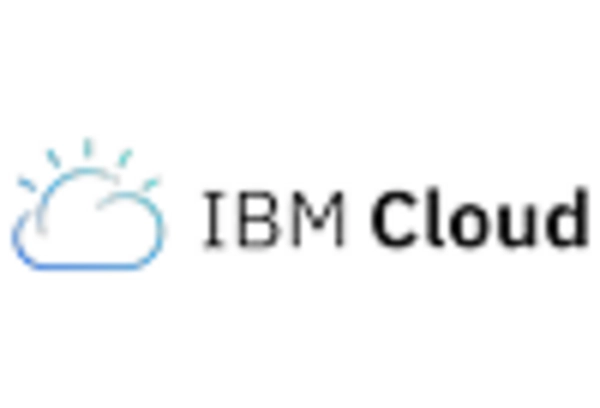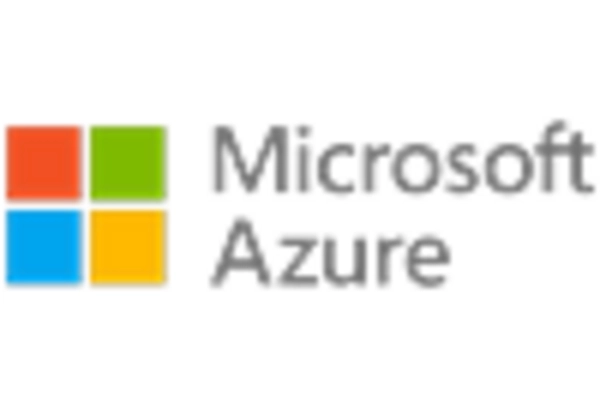-
FACTOR ANALYSIS
-
\r\n\r\n\r\nValue chain Analysis
-
\r\n\r\n\r\nPorter's
-
Five Forces Analysis
-
\r\n\r\n\r\nBargaining Power of Suppliers
-
\r\n\r\n\r\nBargaining
-
Power of Buyers
-
\r\n\r\n\r\nThreat of New Entrants
-
\r\n\r\n\r\nThreat
-
of Substitutes
-
\r\n\r\n\r\nIntensity of Rivalry
-
\r\n\r\n\r\n\r\n\r\nCOVID-19
-
Impact Analysis
-
\r\n\r\n\r\nMarket Impact Analysis
-
\r\n\r\n\r\nRegional
-
Impact
-
\r\n\r\n\r\nOpportunity and Threat Analysis
-
\r\n\r\n\r\n\r\n\r\n\r\n\r\n
-
\r\n
-
\r\n\r\n\r\nInfrastructure
-
as a Service Market, BY Deployment Model (USD Billion)
-
\r\n\r\n\r\nPublic
-
Cloud
-
\r\n\r\n\r\nPrivate Cloud
-
\r\n\r\n\r\nHybrid
-
Cloud
-
\r\n\r\n\r\n\r\n\r\nInfrastructure as a Service
-
Market, BY Service Type (USD Billion)
-
\r\n\r\n\r\nCompute
-
\r\n\r\n\r\nStorage
-
\r\n\r\n\r\nNetworking
-
\r\n\r\n\r\nDisaster
-
Recovery
-
\r\n\r\n\r\n\r\n\r\nInfrastructure as
-
a Service Market, BY End User (USD Billion)
-
\r\n\r\n\r\nIT
-
and Telecommunications
-
\r\n\r\n\r\nBFSI
-
\r\n\r\n\r\nHealthcare
-
\r\n\r\n\r\nRetail
-
\r\n\r\n\r\nGovernment
-
\r\n\r\n\r\n\r\n\r\nInfrastructure
-
as a Service Market, BY Application (USD Billion)
-
\r\n\r\n\r\nBusiness
-
Continuity
-
\r\n\r\n\r\nData Backup
-
\r\n\r\n\r\nTest
-
and Development
-
\r\n\r\n\r\nBig Data Analytics
-
\r\n\r\n\r\n\r\n\r\nInfrastructure
-
as a Service Market, BY Regional (USD Billion)
-
\r\n\r\n\r\nNorth
-
America
-
\r\n\r\n\r\nUS
-
\r\n\r\n\r\nCanada
-
\r\n\r\n\r\n\r\n\r\nEurope
-
\r\n\r\n\r\nGermany
-
\r\n\r\n\r\nUK
-
\r\n\r\n\r\nFrance
-
\r\n\r\n\r\nRussia
-
\r\n\r\n\r\nItaly
-
\r\n\r\n\r\nSpain
-
\r\n\r\n\r\nRest
-
of Europe
-
\r\n\r\n\r\n\r\n\r\nAPAC
-
\r\n\r\n\r\nChina
-
\r\n\r\n\r\nIndia
-
\r\n\r\n\r\nJapan
-
\r\n\r\n\r\nSouth
-
Korea
-
\r\n\r\n\r\nMalaysia
-
\r\n\r\n\r\nThailand
-
\r\n\r\n\r\nIndonesia
-
\r\n\r\n\r\nRest
-
of APAC
-
\r\n\r\n\r\n\r\n\r\nSouth America
-
\r\n\r\n\r\nBrazil
-
\r\n\r\n\r\nMexico
-
\r\n\r\n\r\nArgentina
-
\r\n\r\n\r\nRest
-
of South America
-
\r\n\r\n\r\n\r\n\r\nMEA
-
\r\n\r\n\r\nGCC
-
Countries
-
\r\n\r\n\r\nSouth Africa
-
\r\n\r\n\r\nRest
-
of MEA
-
\r\n\r\n\r\n\r\n\r\n\r\n\r\n
-
\r\n
-
\r\n\r\n\r\nCompetitive
-
Landscape
-
\r\n\r\n\r\nOverview
-
\r\n\r\n\r\nCompetitive
-
Analysis
-
\r\n\r\n\r\nMarket share Analysis
-
\r\n\r\n\r\nMajor
-
Growth Strategy in the Infrastructure as a Service Market
-
\r\n\r\n\r\nCompetitive
-
Benchmarking
-
\r\n\r\n\r\nLeading Players in Terms of Number of Developments
-
in the Infrastructure as a Service Market
-
\r\n\r\n\r\nKey developments
-
and growth strategies
-
\r\n\r\n\r\nNew Product Launch/Service Deployment
-
\r\n\r\n\r\nMerger
-
& Acquisitions
-
\r\n\r\n\r\nJoint Ventures
-
\r\n\r\n\r\n\r\n\r\nMajor
-
Players Financial Matrix
-
\r\n\r\n\r\nSales and Operating Income
-
\r\n\r\n\r\nMajor
-
Players R&D Expenditure. 2023
-
\r\n\r\n\r\n\r\n\r\n\r\n\r\nCompany
-
Profiles
-
\r\n\r\n\r\nAlibaba Cloud
-
\r\n\r\n\r\nFinancial
-
Overview
-
\r\n\r\n\r\nProducts Offered
-
\r\n\r\n\r\nKey
-
Developments
-
\r\n\r\n\r\nSWOT Analysis
-
\r\n\r\n\r\nKey
-
Strategies
-
\r\n\r\n\r\n\r\n\r\nIBM
-
\r\n\r\n\r\nFinancial
-
Overview
-
\r\n\r\n\r\nProducts Offered
-
\r\n\r\n\r\nKey
-
Developments
-
\r\n\r\n\r\nSWOT Analysis
-
\r\n\r\n\r\nKey
-
Strategies
-
\r\n\r\n\r\n\r\n\r\nSAP
-
\r\n\r\n\r\nFinancial
-
Overview
-
\r\n\r\n\r\nProducts Offered
-
\r\n\r\n\r\nKey
-
Developments
-
\r\n\r\n\r\nSWOT Analysis
-
\r\n\r\n\r\nKey
-
Strategies
-
\r\n\r\n\r\n\r\n\r\nRackspace
-
\r\n\r\n\r\nFinancial
-
Overview
-
\r\n\r\n\r\nProducts Offered
-
\r\n\r\n\r\nKey
-
Developments
-
\r\n\r\n\r\nSWOT Analysis
-
\r\n\r\n\r\nKey
-
Strategies
-
\r\n\r\n\r\n\r\n\r\nSalesforce
-
\r\n\r\n\r\nFinancial
-
Overview
-
\r\n\r\n\r\nProducts Offered
-
\r\n\r\n\r\nKey
-
Developments
-
\r\n\r\n\r\nSWOT Analysis
-
\r\n\r\n\r\nKey
-
Strategies
-
\r\n\r\n\r\n\r\n\r\nGoogle
-
\r\n\r\n\r\nFinancial
-
Overview
-
\r\n\r\n\r\nProducts Offered
-
\r\n\r\n\r\nKey
-
Developments
-
\r\n\r\n\r\nSWOT Analysis
-
\r\n\r\n\r\nKey
-
Strategies
-
\r\n\r\n\r\n\r\n\r\nAmazon Web Services
-
\r\n\r\n\r\nFinancial
-
Overview
-
\r\n\r\n\r\nProducts Offered
-
\r\n\r\n\r\nKey
-
Developments
-
\r\n\r\n\r\nSWOT Analysis
-
\r\n\r\n\r\nKey
-
Strategies
-
\r\n\r\n\r\n\r\n\r\nDigitalOcean
-
\r\n\r\n\r\nFinancial
-
Overview
-
\r\n\r\n\r\nProducts Offered
-
\r\n\r\n\r\nKey
-
Developments
-
\r\n\r\n\r\nSWOT Analysis
-
\r\n\r\n\r\nKey
-
Strategies
-
\r\n\r\n\r\n\r\n\r\nMicrosoft
-
\r\n\r\n\r\nFinancial
-
Overview
-
\r\n\r\n\r\nProducts Offered
-
\r\n\r\n\r\nKey
-
Developments
-
\r\n\r\n\r\nSWOT Analysis
-
\r\n\r\n\r\nKey
-
Strategies
-
\r\n\r\n\r\n\r\n\r\nTencent Cloud
-
\r\n\r\n\r\nFinancial
-
Overview
-
\r\n\r\n\r\nProducts Offered
-
\r\n\r\n\r\nKey
-
Developments
-
\r\n\r\n\r\nSWOT Analysis
-
\r\n\r\n\r\nKey
-
Strategies
-
\r\n\r\n\r\n\r\n\r\nHewlett Packard Enterprise
-
\r\n\r\n\r\nFinancial
-
Overview
-
\r\n\r\n\r\nProducts Offered
-
\r\n\r\n\r\nKey
-
Developments
-
\r\n\r\n\r\nSWOT Analysis
-
\r\n\r\n\r\nKey
-
Strategies
-
\r\n\r\n\r\n\r\n\r\nVMware
-
\r\n\r\n\r\nFinancial
-
Overview
-
\r\n\r\n\r\nProducts Offered
-
\r\n\r\n\r\nKey
-
Developments
-
\r\n\r\n\r\nSWOT Analysis
-
\r\n\r\n\r\nKey
-
Strategies
-
\r\n\r\n\r\n\r\n\r\nLinode
-
\r\n\r\n\r\nFinancial
-
Overview
-
\r\n\r\n\r\nProducts Offered
-
\r\n\r\n\r\nKey
-
Developments
-
\r\n\r\n\r\nSWOT Analysis
-
\r\n\r\n\r\nKey
-
Strategies
-
\r\n\r\n\r\n\r\n\r\nCisco
-
\r\n\r\n\r\nFinancial
-
Overview
-
\r\n\r\n\r\nProducts Offered
-
\r\n\r\n\r\nKey
-
Developments
-
\r\n\r\n\r\nSWOT Analysis
-
\r\n\r\n\r\nKey
-
Strategies
-
\r\n\r\n\r\n\r\n\r\nOracle
-
\r\n\r\n\r\nFinancial
-
Overview
-
\r\n\r\n\r\nProducts Offered
-
\r\n\r\n\r\nKey
-
Developments
-
\r\n\r\n\r\nSWOT Analysis
-
\r\n\r\n\r\nKey
-
Strategies
-
\r\n\r\n\r\n\r\n\r\n\r\n\r\nAppendix
-
\r\n\r\n\r\nReferences
-
\r\n\r\n\r\nRelated
-
Reports
-
\r\n\r\n\r\n\r\n\r\nLIST Of tables
-
\r\n
-
\r\n\r\n\r\nLIST
-
OF ASSUMPTIONS
-
\r\n\r\n\r\nNorth America Infrastructure as a Service
-
Market SIZE ESTIMATES & FORECAST, BY DEPLOYMENT MODEL, 2019-2035 (USD Billions)
-
\r\n\r\n\r\nNorth
-
America Infrastructure as a Service Market SIZE ESTIMATES & FORECAST, BY SERVICE
-
TYPE, 2019-2035 (USD Billions)
-
\r\n\r\n\r\nNorth America Infrastructure
-
as a Service Market SIZE ESTIMATES & FORECAST, BY END USER, 2019-2035 (USD Billions)
-
\r\n\r\n\r\nNorth
-
America Infrastructure as a Service Market SIZE ESTIMATES & FORECAST, BY APPLICATION,
-
\r\n\r\n\r\nNorth America Infrastructure
-
as a Service Market SIZE ESTIMATES & FORECAST, BY REGIONAL, 2019-2035 (USD Billions)
-
\r\n\r\n\r\nUS
-
Infrastructure as a Service Market SIZE ESTIMATES & FORECAST, BY DEPLOYMENT
-
MODEL, 2019-2035 (USD Billions)
-
\r\n\r\n\r\nUS Infrastructure as
-
a Service Market SIZE ESTIMATES & FORECAST, BY SERVICE TYPE, 2019-2035 (USD
-
Billions)
-
\r\n\r\n\r\nUS Infrastructure as a Service Market SIZE
-
ESTIMATES & FORECAST, BY END USER, 2019-2035 (USD Billions)
-
\r\n\r\n\r\nUS
-
Infrastructure as a Service Market SIZE ESTIMATES & FORECAST, BY APPLICATION,
-
\r\n\r\n\r\nUS Infrastructure as a Service
-
Market SIZE ESTIMATES & FORECAST, BY REGIONAL, 2019-2035 (USD Billions)
-
\r\n\r\n\r\nCanada
-
Infrastructure as a Service Market SIZE ESTIMATES & FORECAST, BY DEPLOYMENT
-
MODEL, 2019-2035 (USD Billions)
-
\r\n\r\n\r\nCanada Infrastructure
-
as a Service Market SIZE ESTIMATES & FORECAST, BY SERVICE TYPE, 2019-2035 (USD
-
Billions)
-
\r\n\r\n\r\nCanada Infrastructure as a Service Market SIZE
-
ESTIMATES & FORECAST, BY END USER, 2019-2035 (USD Billions)
-
\r\n\r\n\r\nCanada
-
Infrastructure as a Service Market SIZE ESTIMATES & FORECAST, BY APPLICATION,
-
\r\n\r\n\r\nCanada Infrastructure as a Service
-
Market SIZE ESTIMATES & FORECAST, BY REGIONAL, 2019-2035 (USD Billions)
-
\r\n\r\n\r\nEurope
-
Infrastructure as a Service Market SIZE ESTIMATES & FORECAST, BY DEPLOYMENT
-
MODEL, 2019-2035 (USD Billions)
-
\r\n\r\n\r\nEurope Infrastructure
-
as a Service Market SIZE ESTIMATES & FORECAST, BY SERVICE TYPE, 2019-2035 (USD
-
Billions)
-
\r\n\r\n\r\nEurope Infrastructure as a Service Market SIZE
-
ESTIMATES & FORECAST, BY END USER, 2019-2035 (USD Billions)
-
\r\n\r\n\r\nEurope
-
Infrastructure as a Service Market SIZE ESTIMATES & FORECAST, BY APPLICATION,
-
\r\n\r\n\r\nEurope Infrastructure as a Service
-
Market SIZE ESTIMATES & FORECAST, BY REGIONAL, 2019-2035 (USD Billions)
-
\r\n\r\n\r\nGermany
-
Infrastructure as a Service Market SIZE ESTIMATES & FORECAST, BY DEPLOYMENT
-
MODEL, 2019-2035 (USD Billions)
-
\r\n\r\n\r\nGermany Infrastructure
-
as a Service Market SIZE ESTIMATES & FORECAST, BY SERVICE TYPE, 2019-2035 (USD
-
Billions)
-
\r\n\r\n\r\nGermany Infrastructure as a Service Market
-
SIZE ESTIMATES & FORECAST, BY END USER, 2019-2035 (USD Billions)
-
\r\n\r\n\r\nGermany
-
Infrastructure as a Service Market SIZE ESTIMATES & FORECAST, BY APPLICATION,
-
\r\n\r\n\r\nGermany Infrastructure as a
-
Service Market SIZE ESTIMATES & FORECAST, BY REGIONAL, 2019-2035 (USD Billions)
-
\r\n\r\n\r\nUK
-
Infrastructure as a Service Market SIZE ESTIMATES & FORECAST, BY DEPLOYMENT
-
MODEL, 2019-2035 (USD Billions)
-
\r\n\r\n\r\nUK Infrastructure as
-
a Service Market SIZE ESTIMATES & FORECAST, BY SERVICE TYPE, 2019-2035 (USD
-
Billions)
-
\r\n\r\n\r\nUK Infrastructure as a Service Market SIZE
-
ESTIMATES & FORECAST, BY END USER, 2019-2035 (USD Billions)
-
\r\n\r\n\r\nUK
-
Infrastructure as a Service Market SIZE ESTIMATES & FORECAST, BY APPLICATION,
-
\r\n\r\n\r\nUK Infrastructure as a Service
-
Market SIZE ESTIMATES & FORECAST, BY REGIONAL, 2019-2035 (USD Billions)
-
\r\n\r\n\r\nFrance
-
Infrastructure as a Service Market SIZE ESTIMATES & FORECAST, BY DEPLOYMENT
-
MODEL, 2019-2035 (USD Billions)
-
\r\n\r\n\r\nFrance Infrastructure
-
as a Service Market SIZE ESTIMATES & FORECAST, BY SERVICE TYPE, 2019-2035 (USD
-
Billions)
-
\r\n\r\n\r\nFrance Infrastructure as a Service Market SIZE
-
ESTIMATES & FORECAST, BY END USER, 2019-2035 (USD Billions)
-
\r\n\r\n\r\nFrance
-
Infrastructure as a Service Market SIZE ESTIMATES & FORECAST, BY APPLICATION,
-
\r\n\r\n\r\nFrance Infrastructure as a Service
-
Market SIZE ESTIMATES & FORECAST, BY REGIONAL, 2019-2035 (USD Billions)
-
\r\n\r\n\r\nRussia
-
Infrastructure as a Service Market SIZE ESTIMATES & FORECAST, BY DEPLOYMENT
-
MODEL, 2019-2035 (USD Billions)
-
\r\n\r\n\r\nRussia Infrastructure
-
as a Service Market SIZE ESTIMATES & FORECAST, BY SERVICE TYPE, 2019-2035 (USD
-
Billions)
-
\r\n\r\n\r\nRussia Infrastructure as a Service Market SIZE
-
ESTIMATES & FORECAST, BY END USER, 2019-2035 (USD Billions)
-
\r\n\r\n\r\nRussia
-
Infrastructure as a Service Market SIZE ESTIMATES & FORECAST, BY APPLICATION,
-
\r\n\r\n\r\nRussia Infrastructure as a Service
-
Market SIZE ESTIMATES & FORECAST, BY REGIONAL, 2019-2035 (USD Billions)
-
\r\n\r\n\r\nItaly
-
Infrastructure as a Service Market SIZE ESTIMATES & FORECAST, BY DEPLOYMENT
-
MODEL, 2019-2035 (USD Billions)
-
\r\n\r\n\r\nItaly Infrastructure
-
as a Service Market SIZE ESTIMATES & FORECAST, BY SERVICE TYPE, 2019-2035 (USD
-
Billions)
-
\r\n\r\n\r\nItaly Infrastructure as a Service Market SIZE
-
ESTIMATES & FORECAST, BY END USER, 2019-2035 (USD Billions)
-
\r\n\r\n\r\nItaly
-
Infrastructure as a Service Market SIZE ESTIMATES & FORECAST, BY APPLICATION,
-
\r\n\r\n\r\nItaly Infrastructure as a Service
-
Market SIZE ESTIMATES & FORECAST, BY REGIONAL, 2019-2035 (USD Billions)
-
\r\n\r\n\r\nSpain
-
Infrastructure as a Service Market SIZE ESTIMATES & FORECAST, BY DEPLOYMENT
-
MODEL, 2019-2035 (USD Billions)
-
\r\n\r\n\r\nSpain Infrastructure
-
as a Service Market SIZE ESTIMATES & FORECAST, BY SERVICE TYPE, 2019-2035 (USD
-
Billions)
-
\r\n\r\n\r\nSpain Infrastructure as a Service Market SIZE
-
ESTIMATES & FORECAST, BY END USER, 2019-2035 (USD Billions)
-
\r\n\r\n\r\nSpain
-
Infrastructure as a Service Market SIZE ESTIMATES & FORECAST, BY APPLICATION,
-
\r\n\r\n\r\nSpain Infrastructure as a Service
-
Market SIZE ESTIMATES & FORECAST, BY REGIONAL, 2019-2035 (USD Billions)
-
\r\n\r\n\r\nRest
-
of Europe Infrastructure as a Service Market SIZE ESTIMATES & FORECAST, BY DEPLOYMENT
-
MODEL, 2019-2035 (USD Billions)
-
\r\n\r\n\r\nRest of Europe Infrastructure
-
as a Service Market SIZE ESTIMATES & FORECAST, BY SERVICE TYPE, 2019-2035 (USD
-
Billions)
-
\r\n\r\n\r\nRest of Europe Infrastructure as a Service
-
Market SIZE ESTIMATES & FORECAST, BY END USER, 2019-2035 (USD Billions)
-
\r\n\r\n\r\nRest
-
of Europe Infrastructure as a Service Market SIZE ESTIMATES & FORECAST, BY APPLICATION,
-
\r\n\r\n\r\nRest of Europe Infrastructure
-
as a Service Market SIZE ESTIMATES & FORECAST, BY REGIONAL, 2019-2035 (USD Billions)
-
\r\n\r\n\r\nAPAC
-
Infrastructure as a Service Market SIZE ESTIMATES & FORECAST, BY DEPLOYMENT
-
MODEL, 2019-2035 (USD Billions)
-
\r\n\r\n\r\nAPAC Infrastructure as
-
a Service Market SIZE ESTIMATES & FORECAST, BY SERVICE TYPE, 2019-2035 (USD
-
Billions)
-
\r\n\r\n\r\nAPAC Infrastructure as a Service Market SIZE
-
ESTIMATES & FORECAST, BY END USER, 2019-2035 (USD Billions)
-
\r\n\r\n\r\nAPAC
-
Infrastructure as a Service Market SIZE ESTIMATES & FORECAST, BY APPLICATION,
-
\r\n\r\n\r\nAPAC Infrastructure as a Service
-
Market SIZE ESTIMATES & FORECAST, BY REGIONAL, 2019-2035 (USD Billions)
-
\r\n\r\n\r\nChina
-
Infrastructure as a Service Market SIZE ESTIMATES & FORECAST, BY DEPLOYMENT
-
MODEL, 2019-2035 (USD Billions)
-
\r\n\r\n\r\nChina Infrastructure
-
as a Service Market SIZE ESTIMATES & FORECAST, BY SERVICE TYPE, 2019-2035 (USD
-
Billions)
-
\r\n\r\n\r\nChina Infrastructure as a Service Market SIZE
-
ESTIMATES & FORECAST, BY END USER, 2019-2035 (USD Billions)
-
\r\n\r\n\r\nChina
-
Infrastructure as a Service Market SIZE ESTIMATES & FORECAST, BY APPLICATION,
-
\r\n\r\n\r\nChina Infrastructure as a Service
-
Market SIZE ESTIMATES & FORECAST, BY REGIONAL, 2019-2035 (USD Billions)
-
\r\n\r\n\r\nIndia
-
Infrastructure as a Service Market SIZE ESTIMATES & FORECAST, BY DEPLOYMENT
-
MODEL, 2019-2035 (USD Billions)
-
\r\n\r\n\r\nIndia Infrastructure
-
as a Service Market SIZE ESTIMATES & FORECAST, BY SERVICE TYPE, 2019-2035 (USD
-
Billions)
-
\r\n\r\n\r\nIndia Infrastructure as a Service Market SIZE
-
ESTIMATES & FORECAST, BY END USER, 2019-2035 (USD Billions)
-
\r\n\r\n\r\nIndia
-
Infrastructure as a Service Market SIZE ESTIMATES & FORECAST, BY APPLICATION,
-
\r\n\r\n\r\nIndia Infrastructure as a Service
-
Market SIZE ESTIMATES & FORECAST, BY REGIONAL, 2019-2035 (USD Billions)
-
\r\n\r\n\r\nJapan
-
Infrastructure as a Service Market SIZE ESTIMATES & FORECAST, BY DEPLOYMENT
-
MODEL, 2019-2035 (USD Billions)
-
\r\n\r\n\r\nJapan Infrastructure
-
as a Service Market SIZE ESTIMATES & FORECAST, BY SERVICE TYPE, 2019-2035 (USD
-
Billions)
-
\r\n\r\n\r\nJapan Infrastructure as a Service Market SIZE
-
ESTIMATES & FORECAST, BY END USER, 2019-2035 (USD Billions)
-
\r\n\r\n\r\nJapan
-
Infrastructure as a Service Market SIZE ESTIMATES & FORECAST, BY APPLICATION,
-
\r\n\r\n\r\nJapan Infrastructure as a Service
-
Market SIZE ESTIMATES & FORECAST, BY REGIONAL, 2019-2035 (USD Billions)
-
\r\n\r\n\r\nSouth
-
Korea Infrastructure as a Service Market SIZE ESTIMATES & FORECAST, BY DEPLOYMENT
-
MODEL, 2019-2035 (USD Billions)
-
\r\n\r\n\r\nSouth Korea Infrastructure
-
as a Service Market SIZE ESTIMATES & FORECAST, BY SERVICE TYPE, 2019-2035 (USD
-
Billions)
-
\r\n\r\n\r\nSouth Korea Infrastructure as a Service Market
-
SIZE ESTIMATES & FORECAST, BY END USER, 2019-2035 (USD Billions)
-
\r\n\r\n\r\nSouth
-
Korea Infrastructure as a Service Market SIZE ESTIMATES & FORECAST, BY APPLICATION,
-
\r\n\r\n\r\nSouth Korea Infrastructure as
-
a Service Market SIZE ESTIMATES & FORECAST, BY REGIONAL, 2019-2035 (USD Billions)
-
\r\n\r\n\r\nMalaysia
-
Infrastructure as a Service Market SIZE ESTIMATES & FORECAST, BY DEPLOYMENT
-
MODEL, 2019-2035 (USD Billions)
-
\r\n\r\n\r\nMalaysia Infrastructure
-
as a Service Market SIZE ESTIMATES & FORECAST, BY SERVICE TYPE, 2019-2035 (USD
-
Billions)
-
\r\n\r\n\r\nMalaysia Infrastructure as a Service Market
-
SIZE ESTIMATES & FORECAST, BY END USER, 2019-2035 (USD Billions)
-
\r\n\r\n\r\nMalaysia
-
Infrastructure as a Service Market SIZE ESTIMATES & FORECAST, BY APPLICATION,
-
\r\n\r\n\r\nMalaysia Infrastructure as a
-
Service Market SIZE ESTIMATES & FORECAST, BY REGIONAL, 2019-2035 (USD Billions)
-
\r\n\r\n\r\nThailand
-
Infrastructure as a Service Market SIZE ESTIMATES & FORECAST, BY DEPLOYMENT
-
MODEL, 2019-2035 (USD Billions)
-
\r\n\r\n\r\nThailand Infrastructure
-
as a Service Market SIZE ESTIMATES & FORECAST, BY SERVICE TYPE, 2019-2035 (USD
-
Billions)
-
\r\n\r\n\r\nThailand Infrastructure as a Service Market
-
SIZE ESTIMATES & FORECAST, BY END USER, 2019-2035 (USD Billions)
-
\r\n\r\n\r\nThailand
-
Infrastructure as a Service Market SIZE ESTIMATES & FORECAST, BY APPLICATION,
-
\r\n\r\n\r\nThailand Infrastructure as a
-
Service Market SIZE ESTIMATES & FORECAST, BY REGIONAL, 2019-2035 (USD Billions)
-
\r\n\r\n\r\nIndonesia
-
Infrastructure as a Service Market SIZE ESTIMATES & FORECAST, BY DEPLOYMENT
-
MODEL, 2019-2035 (USD Billions)
-
\r\n\r\n\r\nIndonesia Infrastructure
-
as a Service Market SIZE ESTIMATES & FORECAST, BY SERVICE TYPE, 2019-2035 (USD
-
Billions)
-
\r\n\r\n\r\nIndonesia Infrastructure as a Service Market
-
SIZE ESTIMATES & FORECAST, BY END USER, 2019-2035 (USD Billions)
-
\r\n\r\n\r\nIndonesia
-
Infrastructure as a Service Market SIZE ESTIMATES & FORECAST, BY APPLICATION,
-
\r\n\r\n\r\nIndonesia Infrastructure as
-
a Service Market SIZE ESTIMATES & FORECAST, BY REGIONAL, 2019-2035 (USD Billions)
-
\r\n\r\n\r\nRest
-
of APAC Infrastructure as a Service Market SIZE ESTIMATES & FORECAST, BY DEPLOYMENT
-
MODEL, 2019-2035 (USD Billions)
-
\r\n\r\n\r\nRest of APAC Infrastructure
-
as a Service Market SIZE ESTIMATES & FORECAST, BY SERVICE TYPE, 2019-2035 (USD
-
Billions)
-
\r\n\r\n\r\nRest of APAC Infrastructure as a Service Market
-
SIZE ESTIMATES & FORECAST, BY END USER, 2019-2035 (USD Billions)
-
\r\n\r\n\r\nRest
-
of APAC Infrastructure as a Service Market SIZE ESTIMATES & FORECAST, BY APPLICATION,
-
\r\n\r\n\r\nRest of APAC Infrastructure
-
as a Service Market SIZE ESTIMATES & FORECAST, BY REGIONAL, 2019-2035 (USD Billions)
-
\r\n\r\n\r\nSouth
-
America Infrastructure as a Service Market SIZE ESTIMATES & FORECAST, BY DEPLOYMENT
-
MODEL, 2019-2035 (USD Billions)
-
\r\n\r\n\r\nSouth America Infrastructure
-
as a Service Market SIZE ESTIMATES & FORECAST, BY SERVICE TYPE, 2019-2035 (USD
-
Billions)
-
\r\n\r\n\r\nSouth America Infrastructure as a Service Market
-
SIZE ESTIMATES & FORECAST, BY END USER, 2019-2035 (USD Billions)
-
\r\n\r\n\r\nSouth
-
America Infrastructure as a Service Market SIZE ESTIMATES & FORECAST, BY APPLICATION,
-
\r\n\r\n\r\nSouth America Infrastructure
-
as a Service Market SIZE ESTIMATES & FORECAST, BY REGIONAL, 2019-2035 (USD Billions)
-
\r\n\r\n\r\nBrazil
-
Infrastructure as a Service Market SIZE ESTIMATES & FORECAST, BY DEPLOYMENT
-
MODEL, 2019-2035 (USD Billions)
-
\r\n\r\n\r\nBrazil Infrastructure
-
as a Service Market SIZE ESTIMATES & FORECAST, BY SERVICE TYPE, 2019-2035 (USD
-
Billions)
-
\r\n\r\n\r\nBrazil Infrastructure as a Service Market SIZE
-
ESTIMATES & FORECAST, BY END USER, 2019-2035 (USD Billions)
-
\r\n\r\n\r\nBrazil
-
Infrastructure as a Service Market SIZE ESTIMATES & FORECAST, BY APPLICATION,
-
\r\n\r\n\r\nBrazil Infrastructure as a Service
-
Market SIZE ESTIMATES & FORECAST, BY REGIONAL, 2019-2035 (USD Billions)
-
\r\n\r\n\r\nMexico
-
Infrastructure as a Service Market SIZE ESTIMATES & FORECAST, BY DEPLOYMENT
-
MODEL, 2019-2035 (USD Billions)
-
\r\n\r\n\r\nMexico Infrastructure
-
as a Service Market SIZE ESTIMATES & FORECAST, BY SERVICE TYPE, 2019-2035 (USD
-
Billions)
-
\r\n\r\n\r\nMexico Infrastructure as a Service Market SIZE
-
ESTIMATES & FORECAST, BY END USER, 2019-2035 (USD Billions)
-
\r\n\r\n\r\nMexico
-
Infrastructure as a Service Market SIZE ESTIMATES & FORECAST, BY APPLICATION,
-
\r\n\r\n\r\nMexico Infrastructure as a Service
-
Market SIZE ESTIMATES & FORECAST, BY REGIONAL, 2019-2035 (USD Billions)
-
\r\n\r\n\r\nArgentina
-
Infrastructure as a Service Market SIZE ESTIMATES & FORECAST, BY DEPLOYMENT
-
MODEL, 2019-2035 (USD Billions)
-
\r\n\r\n\r\nArgentina Infrastructure
-
as a Service Market SIZE ESTIMATES & FORECAST, BY SERVICE TYPE, 2019-2035 (USD
-
Billions)
-
\r\n\r\n\r\nArgentina Infrastructure as a Service Market
-
SIZE ESTIMATES & FORECAST, BY END USER, 2019-2035 (USD Billions)
-
\r\n\r\n\r\nArgentina
-
Infrastructure as a Service Market SIZE ESTIMATES & FORECAST, BY APPLICATION,
-
\r\n\r\n\r\nArgentina Infrastructure as
-
a Service Market SIZE ESTIMATES & FORECAST, BY REGIONAL, 2019-2035 (USD Billions)
-
\r\n\r\n\r\nRest
-
of South America Infrastructure as a Service Market SIZE ESTIMATES & FORECAST,
-
BY DEPLOYMENT MODEL, 2019-2035 (USD Billions)
-
\r\n\r\n\r\nRest of
-
South America Infrastructure as a Service Market SIZE ESTIMATES & FORECAST,
-
BY SERVICE TYPE, 2019-2035 (USD Billions)
-
\r\n\r\n\r\nRest of South
-
America Infrastructure as a Service Market SIZE ESTIMATES & FORECAST, BY END
-
USER, 2019-2035 (USD Billions)
-
\r\n\r\n\r\nRest of South America
-
Infrastructure as a Service Market SIZE ESTIMATES & FORECAST, BY APPLICATION,
-
\r\n\r\n\r\nRest of South America Infrastructure
-
as a Service Market SIZE ESTIMATES & FORECAST, BY REGIONAL, 2019-2035 (USD Billions)
-
\r\n\r\n\r\nMEA
-
Infrastructure as a Service Market SIZE ESTIMATES & FORECAST, BY DEPLOYMENT
-
MODEL, 2019-2035 (USD Billions)
-
\r\n\r\n\r\nMEA Infrastructure as
-
a Service Market SIZE ESTIMATES & FORECAST, BY SERVICE TYPE, 2019-2035 (USD
-
Billions)
-
\r\n\r\n\r\nMEA Infrastructure as a Service Market SIZE
-
ESTIMATES & FORECAST, BY END USER, 2019-2035 (USD Billions)
-
\r\n\r\n\r\nMEA
-
Infrastructure as a Service Market SIZE ESTIMATES & FORECAST, BY APPLICATION,
-
\r\n\r\n\r\nMEA Infrastructure as a Service
-
Market SIZE ESTIMATES & FORECAST, BY REGIONAL, 2019-2035 (USD Billions)
-
\r\n\r\n\r\nGCC
-
Countries Infrastructure as a Service Market SIZE ESTIMATES & FORECAST, BY DEPLOYMENT
-
MODEL, 2019-2035 (USD Billions)
-
\r\n\r\n\r\nGCC Countries Infrastructure
-
as a Service Market SIZE ESTIMATES & FORECAST, BY SERVICE TYPE, 2019-2035 (USD
-
Billions)
-
\r\n\r\n\r\nGCC Countries Infrastructure as a Service Market
-
SIZE ESTIMATES & FORECAST, BY END USER, 2019-2035 (USD Billions)
-
\r\n\r\n\r\nGCC
-
Countries Infrastructure as a Service Market SIZE ESTIMATES & FORECAST, BY APPLICATION,
-
\r\n\r\n\r\nGCC Countries Infrastructure
-
as a Service Market SIZE ESTIMATES & FORECAST, BY REGIONAL, 2019-2035 (USD Billions)
-
\r\n\r\n\r\nSouth
-
Africa Infrastructure as a Service Market SIZE ESTIMATES & FORECAST, BY DEPLOYMENT
-
MODEL, 2019-2035 (USD Billions)
-
\r\n\r\n\r\nSouth Africa Infrastructure
-
as a Service Market SIZE ESTIMATES & FORECAST, BY SERVICE TYPE, 2019-2035 (USD
-
Billions)
-
\r\n\r\n\r\nSouth Africa Infrastructure as a Service Market
-
SIZE ESTIMATES & FORECAST, BY END USER, 2019-2035 (USD Billions)
-
\r\n\r\n\r\nSouth
-
Africa Infrastructure as a Service Market SIZE ESTIMATES & FORECAST, BY APPLICATION,
-
\r\n\r\n\r\nSouth Africa Infrastructure
-
as a Service Market SIZE ESTIMATES & FORECAST, BY REGIONAL, 2019-2035 (USD Billions)
-
\r\n\r\n\r\nRest
-
of MEA Infrastructure as a Service Market SIZE ESTIMATES & FORECAST, BY DEPLOYMENT
-
MODEL, 2019-2035 (USD Billions)
-
\r\n\r\n\r\nRest of MEA Infrastructure
-
as a Service Market SIZE ESTIMATES & FORECAST, BY SERVICE TYPE, 2019-2035 (USD
-
Billions)
-
\r\n\r\n\r\nRest of MEA Infrastructure as a Service Market
-
SIZE ESTIMATES & FORECAST, BY END USER, 2019-2035 (USD Billions)
-
\r\n\r\n\r\nRest
-
of MEA Infrastructure as a Service Market SIZE ESTIMATES & FORECAST, BY APPLICATION,
-
\r\n\r\n\r\nRest of MEA Infrastructure as
-
a Service Market SIZE ESTIMATES & FORECAST, BY REGIONAL, 2019-2035 (USD Billions)
-
\r\n\r\n\r\nPRODUCT
-
LAUNCH/PRODUCT DEVELOPMENT/APPROVAL
-
\r\n\r\n\r\nACQUISITION/PARTNERSHIP
-
\r\n\r\n\r\n
-
\r\n
-
\r\n
-
\r\n
-
\r\n
-
\r\n
-
\r\n
-
\r\n
-
\r\n
-
\r\n
-
\r\n
-
\r\n
-
\r\n
-
\r\n
-
\r\n
-
\r\n
-
\r\n
-
\r\n
-
\r\n
-
\r\n
-
\r\n
-
\r\n
-
\r\n
-
\r\n
-
\r\n
-
\r\n
-
\r\n
-
\r\n
-
\r\n
-
\r\nLIST
-
Of figures
-
\r\n
-
\r\n\r\n\r\nMARKET SYNOPSIS
-
\r\n\r\n\r\nNORTH
-
AMERICA INFRASTRUCTURE AS A SERVICE MARKET ANALYSIS
-
\r\n\r\n\r\nUS
-
INFRASTRUCTURE AS A SERVICE MARKET ANALYSIS BY DEPLOYMENT MODEL
-
\r\n\r\n\r\nUS
-
INFRASTRUCTURE AS A SERVICE MARKET ANALYSIS BY SERVICE TYPE
-
\r\n\r\n\r\nUS
-
INFRASTRUCTURE AS A SERVICE MARKET ANALYSIS BY END USER
-
\r\n\r\n\r\nUS
-
INFRASTRUCTURE AS A SERVICE MARKET ANALYSIS BY APPLICATION
-
\r\n\r\n\r\nUS
-
INFRASTRUCTURE AS A SERVICE MARKET ANALYSIS BY REGIONAL
-
\r\n\r\n\r\nCANADA
-
INFRASTRUCTURE AS A SERVICE MARKET ANALYSIS BY DEPLOYMENT MODEL
-
\r\n\r\n\r\nCANADA
-
INFRASTRUCTURE AS A SERVICE MARKET ANALYSIS BY SERVICE TYPE
-
\r\n\r\n\r\nCANADA
-
INFRASTRUCTURE AS A SERVICE MARKET ANALYSIS BY END USER
-
\r\n\r\n\r\nCANADA
-
INFRASTRUCTURE AS A SERVICE MARKET ANALYSIS BY APPLICATION
-
\r\n\r\n\r\nCANADA
-
INFRASTRUCTURE AS A SERVICE MARKET ANALYSIS BY REGIONAL
-
\r\n\r\n\r\nEUROPE
-
INFRASTRUCTURE AS A SERVICE MARKET ANALYSIS
-
\r\n\r\n\r\nGERMANY INFRASTRUCTURE
-
AS A SERVICE MARKET ANALYSIS BY DEPLOYMENT MODEL
-
\r\n\r\n\r\nGERMANY
-
INFRASTRUCTURE AS A SERVICE MARKET ANALYSIS BY SERVICE TYPE
-
\r\n\r\n\r\nGERMANY
-
INFRASTRUCTURE AS A SERVICE MARKET ANALYSIS BY END USER
-
\r\n\r\n\r\nGERMANY
-
INFRASTRUCTURE AS A SERVICE MARKET ANALYSIS BY APPLICATION
-
\r\n\r\n\r\nGERMANY
-
INFRASTRUCTURE AS A SERVICE MARKET ANALYSIS BY REGIONAL
-
\r\n\r\n\r\nUK
-
INFRASTRUCTURE AS A SERVICE MARKET ANALYSIS BY DEPLOYMENT MODEL
-
\r\n\r\n\r\nUK
-
INFRASTRUCTURE AS A SERVICE MARKET ANALYSIS BY SERVICE TYPE
-
\r\n\r\n\r\nUK
-
INFRASTRUCTURE AS A SERVICE MARKET ANALYSIS BY END USER
-
\r\n\r\n\r\nUK
-
INFRASTRUCTURE AS A SERVICE MARKET ANALYSIS BY APPLICATION
-
\r\n\r\n\r\nUK
-
INFRASTRUCTURE AS A SERVICE MARKET ANALYSIS BY REGIONAL
-
\r\n\r\n\r\nFRANCE
-
INFRASTRUCTURE AS A SERVICE MARKET ANALYSIS BY DEPLOYMENT MODEL
-
\r\n\r\n\r\nFRANCE
-
INFRASTRUCTURE AS A SERVICE MARKET ANALYSIS BY SERVICE TYPE
-
\r\n\r\n\r\nFRANCE
-
INFRASTRUCTURE AS A SERVICE MARKET ANALYSIS BY END USER
-
\r\n\r\n\r\nFRANCE
-
INFRASTRUCTURE AS A SERVICE MARKET ANALYSIS BY APPLICATION
-
\r\n\r\n\r\nFRANCE
-
INFRASTRUCTURE AS A SERVICE MARKET ANALYSIS BY REGIONAL
-
\r\n\r\n\r\nRUSSIA
-
INFRASTRUCTURE AS A SERVICE MARKET ANALYSIS BY DEPLOYMENT MODEL
-
\r\n\r\n\r\nRUSSIA
-
INFRASTRUCTURE AS A SERVICE MARKET ANALYSIS BY SERVICE TYPE
-
\r\n\r\n\r\nRUSSIA
-
INFRASTRUCTURE AS A SERVICE MARKET ANALYSIS BY END USER
-
\r\n\r\n\r\nRUSSIA
-
INFRASTRUCTURE AS A SERVICE MARKET ANALYSIS BY APPLICATION
-
\r\n\r\n\r\nRUSSIA
-
INFRASTRUCTURE AS A SERVICE MARKET ANALYSIS BY REGIONAL
-
\r\n\r\n\r\nITALY
-
INFRASTRUCTURE AS A SERVICE MARKET ANALYSIS BY DEPLOYMENT MODEL
-
\r\n\r\n\r\nITALY
-
INFRASTRUCTURE AS A SERVICE MARKET ANALYSIS BY SERVICE TYPE
-
\r\n\r\n\r\nITALY
-
INFRASTRUCTURE AS A SERVICE MARKET ANALYSIS BY END USER
-
\r\n\r\n\r\nITALY
-
INFRASTRUCTURE AS A SERVICE MARKET ANALYSIS BY APPLICATION
-
\r\n\r\n\r\nITALY
-
INFRASTRUCTURE AS A SERVICE MARKET ANALYSIS BY REGIONAL
-
\r\n\r\n\r\nSPAIN
-
INFRASTRUCTURE AS A SERVICE MARKET ANALYSIS BY DEPLOYMENT MODEL
-
\r\n\r\n\r\nSPAIN
-
INFRASTRUCTURE AS A SERVICE MARKET ANALYSIS BY SERVICE TYPE
-
\r\n\r\n\r\nSPAIN
-
INFRASTRUCTURE AS A SERVICE MARKET ANALYSIS BY END USER
-
\r\n\r\n\r\nSPAIN
-
INFRASTRUCTURE AS A SERVICE MARKET ANALYSIS BY APPLICATION
-
\r\n\r\n\r\nSPAIN
-
INFRASTRUCTURE AS A SERVICE MARKET ANALYSIS BY REGIONAL
-
\r\n\r\n\r\nREST
-
OF EUROPE INFRASTRUCTURE AS A SERVICE MARKET ANALYSIS BY DEPLOYMENT MODEL
-
\r\n\r\n\r\nREST
-
OF EUROPE INFRASTRUCTURE AS A SERVICE MARKET ANALYSIS BY SERVICE TYPE
-
\r\n\r\n\r\nREST
-
OF EUROPE INFRASTRUCTURE AS A SERVICE MARKET ANALYSIS BY END USER
-
\r\n\r\n\r\nREST
-
OF EUROPE INFRASTRUCTURE AS A SERVICE MARKET ANALYSIS BY APPLICATION
-
\r\n\r\n\r\nREST
-
OF EUROPE INFRASTRUCTURE AS A SERVICE MARKET ANALYSIS BY REGIONAL
-
\r\n\r\n\r\nAPAC
-
INFRASTRUCTURE AS A SERVICE MARKET ANALYSIS
-
\r\n\r\n\r\nCHINA INFRASTRUCTURE
-
AS A SERVICE MARKET ANALYSIS BY DEPLOYMENT MODEL
-
\r\n\r\n\r\nCHINA
-
INFRASTRUCTURE AS A SERVICE MARKET ANALYSIS BY SERVICE TYPE
-
\r\n\r\n\r\nCHINA
-
INFRASTRUCTURE AS A SERVICE MARKET ANALYSIS BY END USER
-
\r\n\r\n\r\nCHINA
-
INFRASTRUCTURE AS A SERVICE MARKET ANALYSIS BY APPLICATION
-
\r\n\r\n\r\nCHINA
-
INFRASTRUCTURE AS A SERVICE MARKET ANALYSIS BY REGIONAL
-
\r\n\r\n\r\nINDIA
-
INFRASTRUCTURE AS A SERVICE MARKET ANALYSIS BY DEPLOYMENT MODEL
-
\r\n\r\n\r\nINDIA
-
INFRASTRUCTURE AS A SERVICE MARKET ANALYSIS BY SERVICE TYPE
-
\r\n\r\n\r\nINDIA
-
INFRASTRUCTURE AS A SERVICE MARKET ANALYSIS BY END USER
-
\r\n\r\n\r\nINDIA
-
INFRASTRUCTURE AS A SERVICE MARKET ANALYSIS BY APPLICATION
-
\r\n\r\n\r\nINDIA
-
INFRASTRUCTURE AS A SERVICE MARKET ANALYSIS BY REGIONAL
-
\r\n\r\n\r\nJAPAN
-
INFRASTRUCTURE AS A SERVICE MARKET ANALYSIS BY DEPLOYMENT MODEL
-
\r\n\r\n\r\nJAPAN
-
INFRASTRUCTURE AS A SERVICE MARKET ANALYSIS BY SERVICE TYPE
-
\r\n\r\n\r\nJAPAN
-
INFRASTRUCTURE AS A SERVICE MARKET ANALYSIS BY END USER
-
\r\n\r\n\r\nJAPAN
-
INFRASTRUCTURE AS A SERVICE MARKET ANALYSIS BY APPLICATION
-
\r\n\r\n\r\nJAPAN
-
INFRASTRUCTURE AS A SERVICE MARKET ANALYSIS BY REGIONAL
-
\r\n\r\n\r\nSOUTH
-
KOREA INFRASTRUCTURE AS A SERVICE MARKET ANALYSIS BY DEPLOYMENT MODEL
-
\r\n\r\n\r\nSOUTH
-
KOREA INFRASTRUCTURE AS A SERVICE MARKET ANALYSIS BY SERVICE TYPE
-
\r\n\r\n\r\nSOUTH
-
KOREA INFRASTRUCTURE AS A SERVICE MARKET ANALYSIS BY END USER
-
\r\n\r\n\r\nSOUTH
-
KOREA INFRASTRUCTURE AS A SERVICE MARKET ANALYSIS BY APPLICATION
-
\r\n\r\n\r\nSOUTH
-
KOREA INFRASTRUCTURE AS A SERVICE MARKET ANALYSIS BY REGIONAL
-
\r\n\r\n\r\nMALAYSIA
-
INFRASTRUCTURE AS A SERVICE MARKET ANALYSIS BY DEPLOYMENT MODEL
-
\r\n\r\n\r\nMALAYSIA
-
INFRASTRUCTURE AS A SERVICE MARKET ANALYSIS BY SERVICE TYPE
-
\r\n\r\n\r\nMALAYSIA
-
INFRASTRUCTURE AS A SERVICE MARKET ANALYSIS BY END USER
-
\r\n\r\n\r\nMALAYSIA
-
INFRASTRUCTURE AS A SERVICE MARKET ANALYSIS BY APPLICATION
-
\r\n\r\n\r\nMALAYSIA
-
INFRASTRUCTURE AS A SERVICE MARKET ANALYSIS BY REGIONAL
-
\r\n\r\n\r\nTHAILAND
-
INFRASTRUCTURE AS A SERVICE MARKET ANALYSIS BY DEPLOYMENT MODEL
-
\r\n\r\n\r\nTHAILAND
-
INFRASTRUCTURE AS A SERVICE MARKET ANALYSIS BY SERVICE TYPE
-
\r\n\r\n\r\nTHAILAND
-
INFRASTRUCTURE AS A SERVICE MARKET ANALYSIS BY END USER
-
\r\n\r\n\r\nTHAILAND
-
INFRASTRUCTURE AS A SERVICE MARKET ANALYSIS BY APPLICATION
-
\r\n\r\n\r\nTHAILAND
-
INFRASTRUCTURE AS A SERVICE MARKET ANALYSIS BY REGIONAL
-
\r\n\r\n\r\nINDONESIA
-
INFRASTRUCTURE AS A SERVICE MARKET ANALYSIS BY DEPLOYMENT MODEL
-
\r\n\r\n\r\nINDONESIA
-
INFRASTRUCTURE AS A SERVICE MARKET ANALYSIS BY SERVICE TYPE
-
\r\n\r\n\r\nINDONESIA
-
INFRASTRUCTURE AS A SERVICE MARKET ANALYSIS BY END USER
-
\r\n\r\n\r\nINDONESIA
-
INFRASTRUCTURE AS A SERVICE MARKET ANALYSIS BY APPLICATION
-
\r\n\r\n\r\nINDONESIA
-
INFRASTRUCTURE AS A SERVICE MARKET ANALYSIS BY REGIONAL
-
\r\n\r\n\r\nREST
-
OF APAC INFRASTRUCTURE AS A SERVICE MARKET ANALYSIS BY DEPLOYMENT MODEL
-
\r\n\r\n\r\nREST
-
OF APAC INFRASTRUCTURE AS A SERVICE MARKET ANALYSIS BY SERVICE TYPE
-
\r\n\r\n\r\nREST
-
OF APAC INFRASTRUCTURE AS A SERVICE MARKET ANALYSIS BY END USER
-
\r\n\r\n\r\nREST
-
OF APAC INFRASTRUCTURE AS A SERVICE MARKET ANALYSIS BY APPLICATION
-
\r\n\r\n\r\nREST
-
OF APAC INFRASTRUCTURE AS A SERVICE MARKET ANALYSIS BY REGIONAL
-
\r\n\r\n\r\nSOUTH
-
AMERICA INFRASTRUCTURE AS A SERVICE MARKET ANALYSIS
-
\r\n\r\n\r\nBRAZIL
-
INFRASTRUCTURE AS A SERVICE MARKET ANALYSIS BY DEPLOYMENT MODEL
-
\r\n\r\n\r\nBRAZIL
-
INFRASTRUCTURE AS A SERVICE MARKET ANALYSIS BY SERVICE TYPE
-
\r\n\r\n\r\nBRAZIL
-
INFRASTRUCTURE AS A SERVICE MARKET ANALYSIS BY END USER
-
\r\n\r\n\r\nBRAZIL
-
INFRASTRUCTURE AS A SERVICE MARKET ANALYSIS BY APPLICATION
-
\r\n\r\n\r\nBRAZIL
-
INFRASTRUCTURE AS A SERVICE MARKET ANALYSIS BY REGIONAL
-
\r\n\r\n\r\nMEXICO
-
INFRASTRUCTURE AS A SERVICE MARKET ANALYSIS BY DEPLOYMENT MODEL
-
\r\n\r\n\r\nMEXICO
-
INFRASTRUCTURE AS A SERVICE MARKET ANALYSIS BY SERVICE TYPE
-
\r\n\r\n\r\nMEXICO
-
INFRASTRUCTURE AS A SERVICE MARKET ANALYSIS BY END USER
-
\r\n\r\n\r\nMEXICO
-
INFRASTRUCTURE AS A SERVICE MARKET ANALYSIS BY APPLICATION
-
\r\n\r\n\r\nMEXICO
-
INFRASTRUCTURE AS A SERVICE MARKET ANALYSIS BY REGIONAL
-
\r\n\r\n\r\nARGENTINA
-
INFRASTRUCTURE AS A SERVICE MARKET ANALYSIS BY DEPLOYMENT MODEL
-
\r\n\r\n\r\nARGENTINA
-
INFRASTRUCTURE AS A SERVICE MARKET ANALYSIS BY SERVICE TYPE
-
\r\n\r\n\r\nARGENTINA
-
INFRASTRUCTURE AS A SERVICE MARKET ANALYSIS BY END USER
-
\r\n\r\n\r\nARGENTINA
-
INFRASTRUCTURE AS A SERVICE MARKET ANALYSIS BY APPLICATION
-
\r\n\r\n\r\nARGENTINA
-
INFRASTRUCTURE AS A SERVICE MARKET ANALYSIS BY REGIONAL
-
\r\n\r\n\r\nREST
-
OF SOUTH AMERICA INFRASTRUCTURE AS A SERVICE MARKET ANALYSIS BY DEPLOYMENT MODEL
-
\r\n\r\n\r\nREST
-
OF SOUTH AMERICA INFRASTRUCTURE AS A SERVICE MARKET ANALYSIS BY SERVICE TYPE
-
\r\n\r\n\r\nREST
-
OF SOUTH AMERICA INFRASTRUCTURE AS A SERVICE MARKET ANALYSIS BY END USER
-
\r\n\r\n\r\nREST
-
OF SOUTH AMERICA INFRASTRUCTURE AS A SERVICE MARKET ANALYSIS BY APPLICATION
-
\r\n\r\n\r\nREST
-
OF SOUTH AMERICA INFRASTRUCTURE AS A SERVICE MARKET ANALYSIS BY REGIONAL
-
\r\n\r\n\r\nMEA
-
INFRASTRUCTURE AS A SERVICE MARKET ANALYSIS
-
\r\n\r\n\r\nGCC COUNTRIES
-
INFRASTRUCTURE AS A SERVICE MARKET ANALYSIS BY DEPLOYMENT MODEL
-
\r\n\r\n\r\nGCC
-
COUNTRIES INFRASTRUCTURE AS A SERVICE MARKET ANALYSIS BY SERVICE TYPE
-
\r\n\r\n\r\nGCC
-
COUNTRIES INFRASTRUCTURE AS A SERVICE MARKET ANALYSIS BY END USER
-
\r\n\r\n\r\nGCC
-
COUNTRIES INFRASTRUCTURE AS A SERVICE MARKET ANALYSIS BY APPLICATION
-
\r\n\r\n\r\nGCC
-
COUNTRIES INFRASTRUCTURE AS A SERVICE MARKET ANALYSIS BY REGIONAL
-
\r\n\r\n\r\nSOUTH
-
AFRICA INFRASTRUCTURE AS A SERVICE MARKET ANALYSIS BY DEPLOYMENT MODEL
-
\r\n\r\n\r\nSOUTH
-
AFRICA INFRASTRUCTURE AS A SERVICE MARKET ANALYSIS BY SERVICE TYPE
-
\r\n\r\n\r\nSOUTH
-
AFRICA INFRASTRUCTURE AS A SERVICE MARKET ANALYSIS BY END USER
-
\r\n\r\n\r\nSOUTH
-
AFRICA INFRASTRUCTURE AS A SERVICE MARKET ANALYSIS BY APPLICATION
-
\r\n\r\n\r\nSOUTH
-
AFRICA INFRASTRUCTURE AS A SERVICE MARKET ANALYSIS BY REGIONAL
-
\r\n\r\n\r\nREST
-
OF MEA INFRASTRUCTURE AS A SERVICE MARKET ANALYSIS BY DEPLOYMENT MODEL
-
\r\n\r\n\r\nREST
-
OF MEA INFRASTRUCTURE AS A SERVICE MARKET ANALYSIS BY SERVICE TYPE
-
\r\n\r\n\r\nREST
-
OF MEA INFRASTRUCTURE AS A SERVICE MARKET ANALYSIS BY END USER
-
\r\n\r\n\r\nREST
-
OF MEA INFRASTRUCTURE AS A SERVICE MARKET ANALYSIS BY APPLICATION
-
\r\n\r\n\r\nREST
-
OF MEA INFRASTRUCTURE AS A SERVICE MARKET ANALYSIS BY REGIONAL
-
\r\n\r\n\r\nKEY
-
BUYING CRITERIA OF INFRASTRUCTURE AS A SERVICE MARKET
-
\r\n\r\n\r\nRESEARCH
-
PROCESS OF MRFR
-
\r\n\r\n\r\nDRO ANALYSIS OF INFRASTRUCTURE AS A SERVICE
-
MARKET
-
\r\n\r\n\r\nDRIVERS IMPACT ANALYSIS: INFRASTRUCTURE AS A SERVICE
-
MARKET
-
\r\n\r\n\r\nRESTRAINTS IMPACT ANALYSIS: INFRASTRUCTURE AS
-
A SERVICE MARKET
-
\r\n\r\n\r\nSUPPLY / VALUE CHAIN: INFRASTRUCTURE
-
AS A SERVICE MARKET
-
\r\n\r\n\r\nINFRASTRUCTURE AS A SERVICE MARKET,
-
BY DEPLOYMENT MODEL, 2025 (% SHARE)
-
\r\n\r\n\r\nINFRASTRUCTURE AS
-
A SERVICE MARKET, BY DEPLOYMENT MODEL, 2019 TO 2035 (USD Billions)
-
\r\n\r\n\r\nINFRASTRUCTURE
-
AS A SERVICE MARKET, BY SERVICE TYPE, 2025 (% SHARE)
-
\r\n\r\n\r\nINFRASTRUCTURE
-
AS A SERVICE MARKET, BY SERVICE TYPE, 2019 TO 2035 (USD Billions)
-
\r\n\r\n\r\nINFRASTRUCTURE
-
AS A SERVICE MARKET, BY END USER, 2025 (% SHARE)
-
\r\n\r\n\r\nINFRASTRUCTURE
-
AS A SERVICE MARKET, BY END USER, 2019 TO 2035 (USD Billions)
-
\r\n\r\n\r\nINFRASTRUCTURE
-
AS A SERVICE MARKET, BY APPLICATION, 2025 (% SHARE)
-
\r\n\r\n\r\nINFRASTRUCTURE
-
AS A SERVICE MARKET, BY APPLICATION, 2019 TO 2035 (USD Billions)
-
\r\n\r\n\r\nINFRASTRUCTURE
-
AS A SERVICE MARKET, BY REGIONAL, 2025 (% SHARE)
-
\r\n\r\n\r\nINFRASTRUCTURE
-
AS A SERVICE MARKET, BY REGIONAL, 2019 TO 2035 (USD Billions)
-
\r\n\r\n\r\nBENCHMARKING
-
OF MAJOR COMPETITORS
-
\r\n\r\n\r\n










Leave a Comment